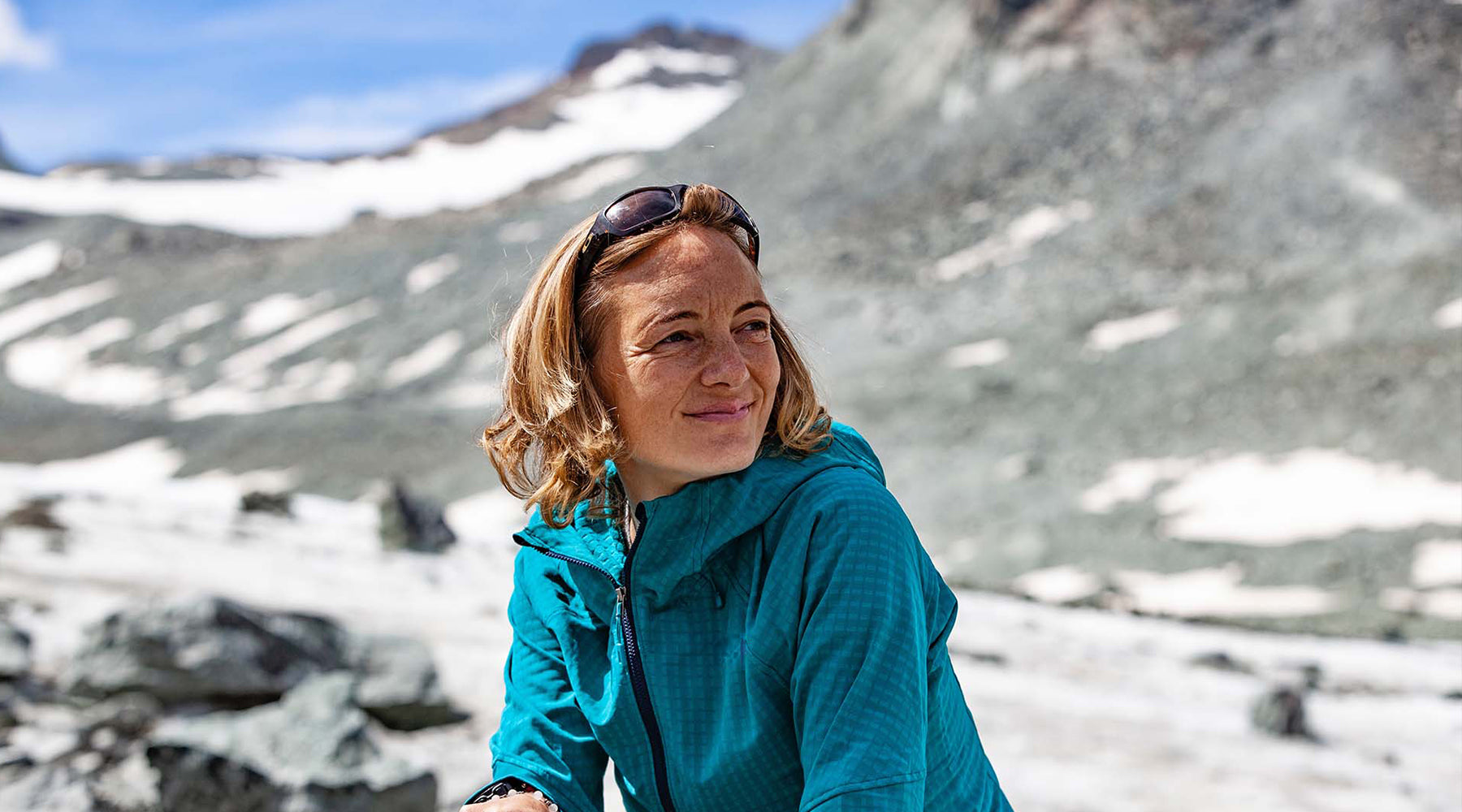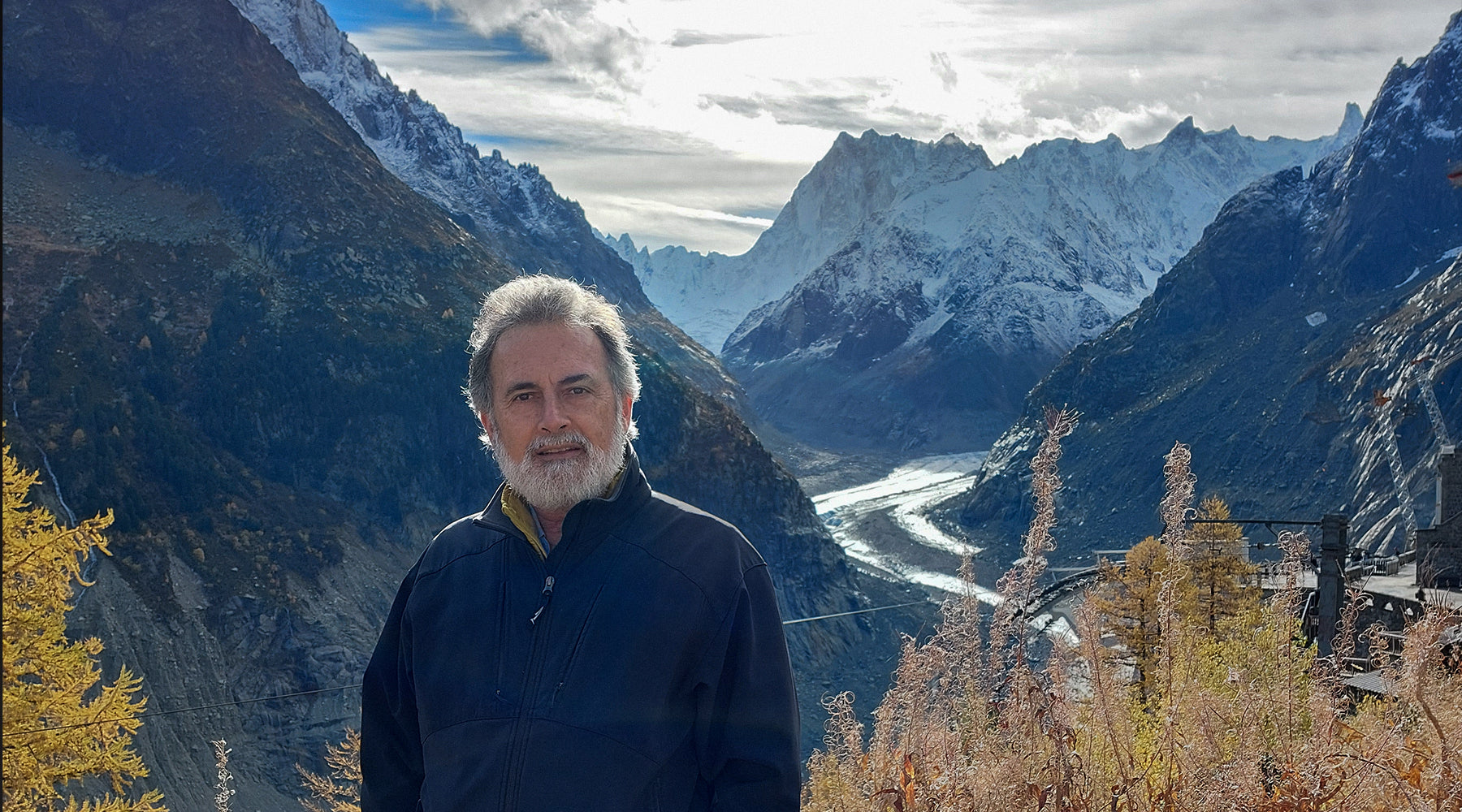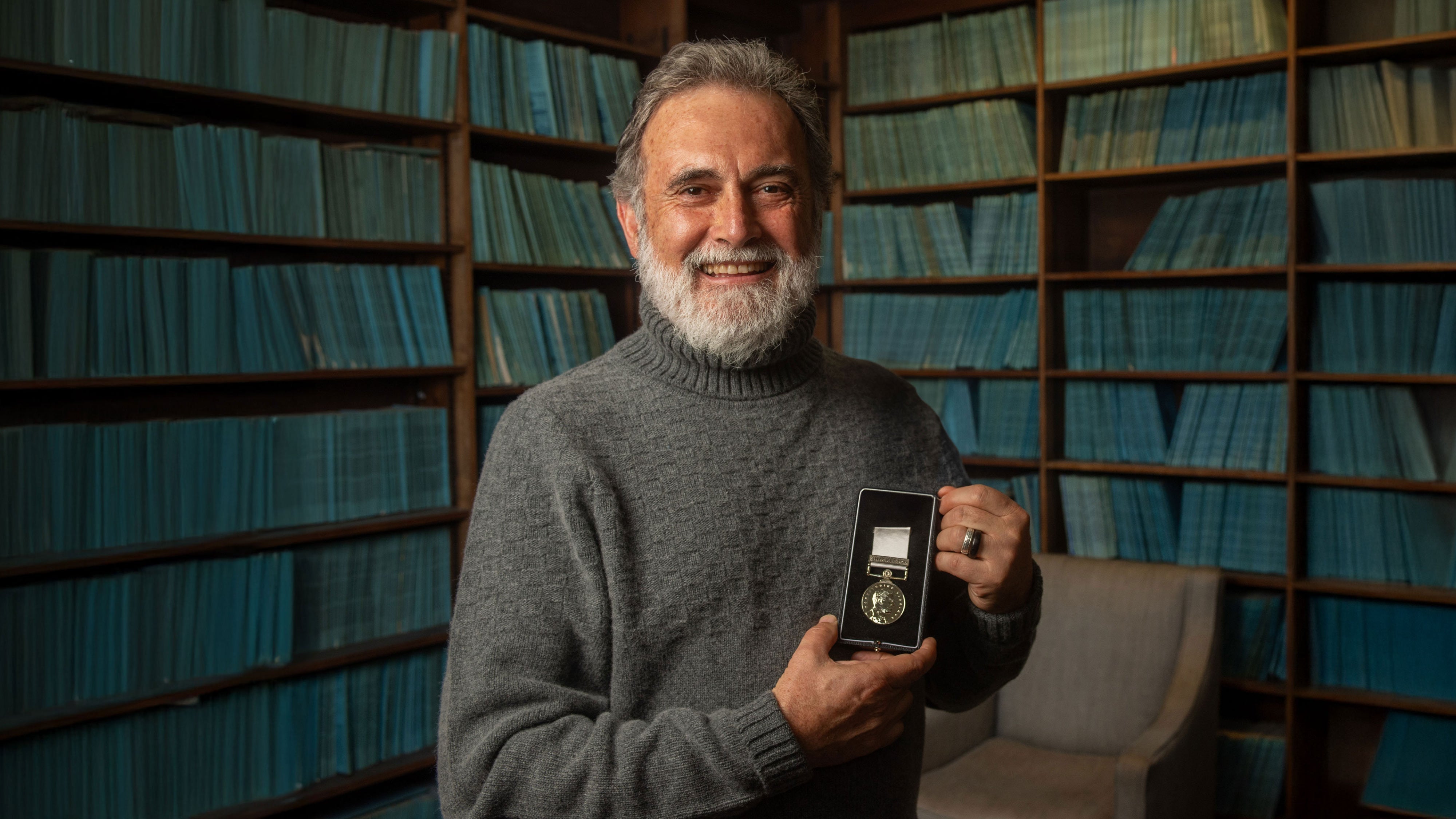
SHACKLETON MEDAL 2025: MEET THE SHORTLIST - JEMMA WADHAM
Glacier Biochemist, Adventurer and Author
Now leading the Centre for Ice, Cryosphere, Carbon and Climate in Tromsø, Wadham’s research is uncovering how melting glaciers may release vast stores of ancient carbon. A trailblazer in polar science and a powerful science communicator, she also overcame a life-threatening brain tumour while continuing to lead world-class research.
You’re now leading the iC3 Centre for ice, Cryosphere, Carbon and Climate in Tromsø. What does that involve?
It’s a Centre of Excellence in Norway. I secured funding from the Norway Research Council to set it up a few years ago. We're nearly two years old, so we're still quite young. Since my role is as Director of the Centre, I'm the person who is driving it forward in terms of strategy, direction, and looking at different focuses. There are more than 50 of us now after two years, which is great. It’s a partnership between my university – UiT The Arctic University of Norway, the Norwegian Polar Institute, and Norsk, which is in Southern Norway. We’ve got a fantastic team of people. The last two years has really been about creating a culture in which while we want to be ambitious, I really believe in supporting young and emerging scientists so they can go out into the world and do incredible things. We spent a lot of time training that next generation of young researchers, mentoring them, and trying to support them with the next step for their career.
Though we’re in the Arctic, the Centre focuses on both the Arctic and Antarctic. The scientific remit is to investigate ice sheets and glaciers. But while there's an awful lot of awareness around changes in the physical size of ice sheets and glacier and issues like sea-level rise, our main goal is to ask what do these changes in ice sheets and glaciers actually mean? How, for instance, does it impact on really important marine ecosystems that produce our fisheries, the things that people rely on for food across the Arctic, or krill in the Antarctic, for example. Or what does it mean for climate – particularly when you think about emissions of carbon from these rapidly retreating masses of ice. Ice sheets also produce methane. We're trying to work out how much what will happen as the ice retreats – what will go back to the atmosphere. Does that cause more warming? So we're really looking at that chemical and biological dimension.
What key breakthroughs have you had in the last year in your own scientific work?
A lot of my scientific work in the last couple of years has been about developing the centre. But some of the things I've been really interested in and have been working on over the last year is melt water coming off ice sheets. People look at this and they think, it's just water, right? So one of the things, or some of the things I've been exploring with PhD students and also my postdoctoral researchers, is what is in that water? Does it contain anything useful for life, or does it contain anything that's potentially harmful for life in the oceans? Some of our research is particularly on what nutrients are in that meltwater. Can it fertilise the oceans? We’re finding high concentrations of important nutrients, including nitrogen and silicon, which can be used by marine organisms to thrive.
We have another project, which is looking at heavy metal release when glaciers grind up the rock beneath them. Glaciers aren’t sterile environments. You have these very diverse populations of microorganisms, single-celled microscopic organisms which are actually eating and digesting rock. Since you've got that erosive process in these microbes, under some geologies could you be releasing things like mercury or arsenic into the things that are on our plate? One of my PhD students took the sediments coming out of glaciers. This was actually in the Himalayas and Iceland. Then she grew crops in these sediments. She actually found – it’s a paper published this year – that this very fine ground-up sediment could produce crop growth. But what she also found in some geological formations she was looking at in the Himalayas is that there’s actually arsenic in those rocks that came out in the soils and ended up in the crop. So that was very interesting to us.
If you work in polar science, it requires not just intellectual bravery, but physical bravery. And there are a lot of challenges working in the field. Can you describe to me a particularly challenging situation you’ve encountered and how you dealt with it?
Every field trip has its challenges. Sometimes for emotional reasons to do with isolation and sometimes for more physical reasons. From a physically demanding point of view, I'd say, the work we were doing around the margins of the Greenland ice sheet was extremely challenging. I remember we went there 10 years ago, and one of the things people didn't know was how meltwater was rooted at the bottom of the ice sheet. Did it flow? How did it flow? It’s really important to understand how the ice actually flows and what might be living beneath the glacier.
We developed methods to trace the melt water with similar methods they use to trace ocean currents across entire ocean basins. I remember being up there with one of my researchers, trying to get this method to work. And it was in autumn. We had just two weeks of rain, and we kept going up to try to get stuff to work, but we couldn't get it to work. We kept coming back and couldn't get it to work. There was a huge lake that drained – there are these lakes around the margins of glaciers which fill up during the melt season. The draining was catastrophic. We were camped not far from this river. Huge kilometres cubed of water drained and it flooded the entire river, and we lost half of our equipment. The whole thing was a complete failure. It was horribly miserable time. Though sometimes you find the greatest sense of humour in these.
The next summer we failed again for about another month on the ice sheet. But eventually we did manage to solve the problem and managed to show that what you have beneath the Greenland ice sheet are these vast rivers, actually, huge rivers going very, very fast, rooting meltwater from the surface to the bottom of the ice sheet and then out. And that was the first time someone had actually directly managed to trace this water flow.
So that was a real breakthrough, but I think the interesting thing is that science actually progresses through failure. You fail, you fail, you fail, you fail. You keep thinking “Why have I failed? What could I do differently?” It requires an awful lot of patience – not just with weather. That’s always going to be a problem in glaciated environments. But you also need to keep going and keep trying something different, and also keep up the morale in your team. Reassure them that we’ll go back and try something different. It’s great when eventually it does work out!
You’ve written a very well-received book about your own extraordinary personal journey. Could you talk about other ways in which you've communicated your research and what you've discovered?
I'm a big believer in finding new ways to tell stories about research, because I think as scientists, we're trained to stick to the facts, and not involve our emotions. This can be quite dry and not necessarily very amenable to a wider audience. One of the most powerful things for me, both personally, but also terms of its effect, was when I was working with kind of people in the arts sector.
I did a fantastic collaboration, which was funded by the Hay Festival in the UK. They basically paired a scientist with an artist. In my case, it was a very well-known writer, Erica Stockholm, who was in Peru. It was about the Peruvian Andes – so not so much about the poles. But we spent quite a while talking about my science, and she wrote this beautiful story. Then we realised that actually we wanted to perform it as a play. During those conversations, I felt this really strong desire to act in the play. It’s a beautiful story about this glacier, and it's dying and retreating and poisoning everything around it – we were looking at the toxic effects of glacier change in the Peruvian Andes. And I remember at one point I said I could become the glacier. I think they all thought I was a bit mad. But in the end, I actually acted the part of the glacier. I spoke the words, I danced, I moved, I was alive, I died, all these things. I performed it twice, once at the Hay festival in Arequipa in Peru, but also to a high level ambassadorial audience with various international people in Lima. It was a really interesting way for me to connect with what I was studying.
By Rachel Halliburton


